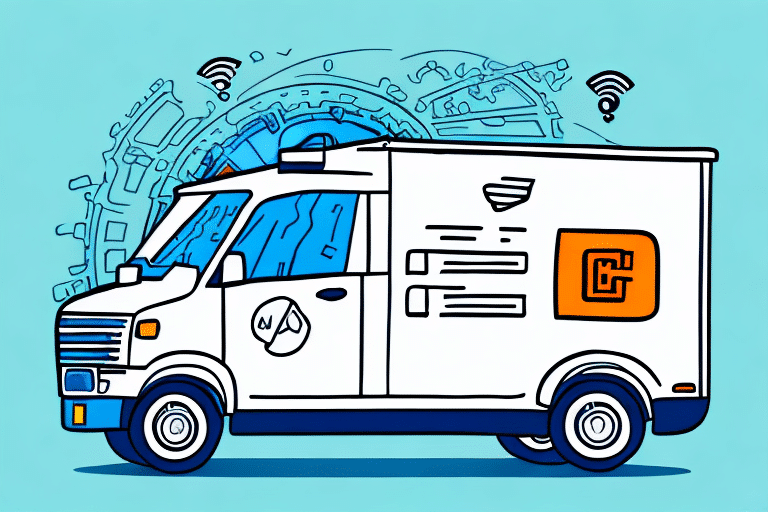The Benefits of Contactless Delivery for Your Business
The evolving landscape of global commerce demands that businesses continuously adapt to meet customer expectations and ensure operational resilience. One significant adaptation is the implementation of contactless delivery. This method not only addresses safety concerns but also enhances customer satisfaction and operational efficiency. In this article, we delve into the multifaceted benefits of contactless delivery and explore how it can propel your business forward in today's dynamic market.
Increasing Popularity of Contactless Delivery
Contactless delivery has surged in popularity, especially in the wake of the global pandemic. According to a Statista report, the adoption of contactless delivery methods increased by over 30% in 2021 alone. This trend is driven by several factors:
- Health and Safety Concerns: Minimizing physical interactions reduces the risk of virus transmission, addressing customer and employee safety.
- Convenience: Customers appreciate the ability to receive goods without leaving their homes, saving time and effort.
- Operational Efficiency: Businesses can streamline their delivery processes, improving speed and reliability.
Enhancing Business Resilience During Uncertain Times
Implementing contactless delivery can significantly enhance your business's ability to navigate through crises, such as pandemics or natural disasters. By ensuring continuity of services, contactless delivery helps maintain revenue streams and customer relationships. Key benefits include:
- Maintaining Revenue: Continuous delivery operations ensure that sales remain steady even when physical stores face restrictions.
- Building Customer Trust: Demonstrating a commitment to safety fosters loyalty and encourages repeat business.
- Operational Flexibility: Businesses can quickly adapt to changing circumstances without overhauling their entire delivery framework.
Studies have shown that businesses that rapidly adopted contactless delivery experienced a 25% increase in customer retention rates during the pandemic (McKinsey & Company).
The Convenience of Contactless Delivery for Customers
In the age of e-commerce, customers demand seamless and efficient shopping experiences. Contactless delivery meets these expectations by offering:
- Timely Deliveries: Real-time tracking and automated notifications keep customers informed about their order status.
- Flexible Scheduling: Customers can choose delivery windows that best fit their schedules, enhancing satisfaction.
- Secure Packaging: Ensuring that packages are handled with care and delivered safely instills confidence in the purchasing process.
A Digital Commerce survey indicates that 60% of consumers prefer contactless delivery options, highlighting its importance in modern retail strategies.
Implementing Contactless Delivery in Your Business
Successful implementation of contactless delivery requires strategic planning and effective communication. Here are essential steps to consider:
1. Choose the Right Delivery Methods
Evaluate various delivery options such as curbside pickup, locker systems, or drone deliveries to determine which best suits your business model and customer needs.
2. Optimize Packaging
Use tamper-evident and durable packaging materials to ensure the safety and integrity of products during transit.
3. Secure Payment Solutions
Implement reliable and user-friendly online payment systems to facilitate seamless transactions without physical exchanges.
4. Communicate Clearly with Customers
Provide detailed instructions on placing orders, scheduling deliveries, and handling any issues that may arise to ensure a smooth customer experience.
5. Equip Your Delivery Personnel
Ensure that your delivery team has access to personal protective equipment (PPE) and is trained in hygiene practices to maintain safety standards.
Integrating a contact tracing system can further enhance safety by enabling quick identification and response in case of any health concerns.
Health and Safety Advantages of Contactless Delivery
Prioritizing health and safety is paramount in today's business environment. Contactless delivery offers several advantages:
- Reduced Transmission Risk: Minimizing physical contact helps prevent the spread of infectious diseases.
- Enhanced Employee Safety: Protecting delivery personnel through contactless methods lowers the risk of workplace illnesses.
- Customer Assurance: Demonstrating a commitment to safety can enhance your brand reputation and customer trust.
Research from the World Health Organization supports the effectiveness of contactless measures in reducing infection rates.
Cost Savings through Contactless Delivery
Implementing contactless delivery can lead to significant cost savings for your business:
- Reduced PPE Expenses: Streamlining delivery processes minimizes the need for extensive PPE usage.
- Operational Efficiency: Automated systems and optimized routes can decrease labor costs and improve delivery speed.
- Lower Return Rates: Enhanced delivery accuracy and packaging can reduce the number of returns, saving on reverse logistics costs.
According to a Forbes article, businesses adopting contactless delivery have reported up to a 20% reduction in overall delivery costs.
Effective Marketing Strategies for Contactless Delivery
Promoting your contactless delivery services can attract more customers and enhance your market presence. Consider the following strategies:
1. Highlight Safety and Convenience
Emphasize the health benefits and ease of using contactless delivery in your marketing materials to appeal to safety-conscious consumers.
2. Leverage Social Media
Use platforms like Instagram, Facebook, and Twitter to showcase your contactless delivery options and share customer testimonials.
3. Offer Incentives
Provide discounts or promotions for customers who choose contactless delivery, encouraging trial and repeat usage.
4. Collaborate with Partners
Partner with other businesses that support contactless methods to expand your reach and offer bundled services.
5. Transparent Communication
Clearly explain your contactless delivery process on your website and during the checkout process to build trust and ease customer concerns.
A study by HubSpot found that 70% of customers are more likely to purchase from a business that offers contactless delivery options.
Addressing Challenges in Implementing Contactless Delivery
While contactless delivery offers numerous benefits, it also presents certain challenges. Effective strategies can help mitigate these issues:
1. Ensuring Timely Deliveries
Utilize advanced tracking systems and real-time communication tools to monitor deliveries and address delays promptly.
2. Managing Increased Demand
Scale your operations by hiring additional staff or partnering with third-party logistics providers to handle surge volumes.
3. Maintaining Package Security
Implement secure drop-off points and use tamper-evident packaging to protect deliveries from theft or damage.
4. Technological Reliability
Invest in robust technology infrastructure and have backup systems in place to prevent disruptions in your contactless delivery services.
According to a Oberlo report, businesses that proactively address delivery challenges see a 15% increase in customer satisfaction.
The Future of Contactless Delivery in the Industry
The trajectory of contactless delivery indicates its permanence in the post-pandemic world. Innovations such as autonomous delivery vehicles, drone deliveries, and advanced AI-driven logistics are set to revolutionize the industry further. Key trends shaping the future include:
- Automation: Increased use of robotics and AI to streamline delivery processes and enhance accuracy.
- Sustainability: Adoption of eco-friendly delivery options, including electric vehicles and green packaging materials.
- Personalization: Enhanced data analytics to offer tailored delivery experiences based on customer preferences.
As reported by Forbes, the contactless delivery market is expected to grow by 25% annually over the next five years, underscoring its significance in the future of commerce.
In conclusion, contactless delivery is not merely a temporary solution but a strategic advantage that can drive business growth, enhance customer satisfaction, and ensure operational resilience. By embracing contactless delivery, businesses position themselves at the forefront of innovation, ready to meet the evolving demands of the modern marketplace.






















